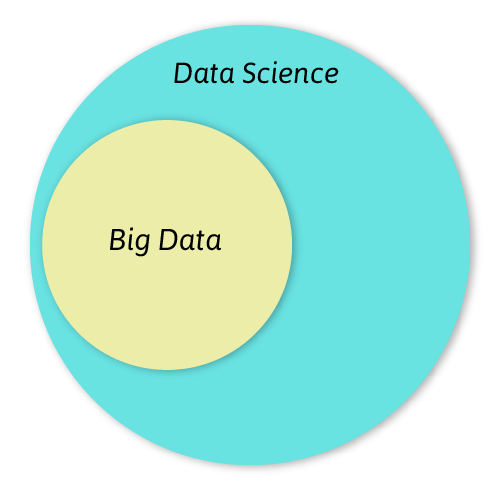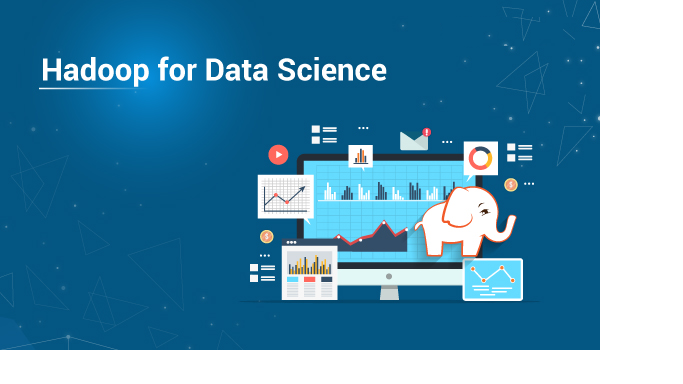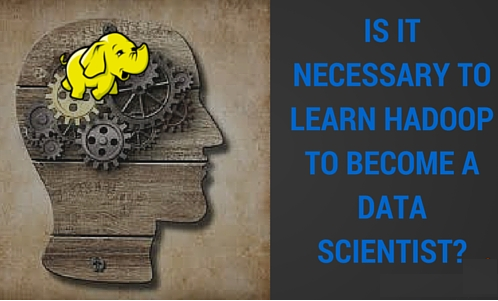Looking for the solution to why you need to learn Hadoop for Data Science? You landed on the right page.
Here you will find why Hadoop is a must for the data scientist. At the end of this tutorial, We will share a case study where you will learn how Marks & Spencer Company is using Hadoop for its data science requirements. So, without wasting the time let’s move on to the topic.
Currently, data is increasing at an exponential rate. There is a huge demand for processing a high volume of data. One such technology that is responsible for processing large volumes of data in Hadoop.
Hadoop for Data Science
Do Data Scientists need Hadoop?
The solution to this question is a big YES! Hadoop is a must for Data Scientists.
Data Science is a vast field. It stems from multiple interdisciplinary fields like mathematics, statistics, and programming. It is about finding patterns in data. Data Scientists are trained for extracting, analyzing, and generating predictions from the data. It is an umbrella term that incorporates almost every technology that involves the use of data.
The main job of Hadoop is the storage of Big Data. It also permits the users to store all forms of data, that is, both structured data and unstructured data.
Hadoop also offers modules like Pig and Hive for analysis of large scale data.

However, the difference between data science and big data is that the former is a discipline that involves all the data operations. As a result, Big Data is a part of Data Science. Since Data Science contains an ocean of information, it is not necessary to know Big Data. Though, the knowledge of Hadoop will certainly add up to your expertise, making you versatile at handling a colossal amount of data. This will also increase your value by a substantial margin in the market and give you a competitive edge over others.
Furthermore, as a Data Scientist, knowledge of Machine Learning is a must. Machine Learning algorithms perform much better with a larger dataset. As such, big data becomes an ideal choice for training machine learning algorithms. Therefore, to understand the intricacies of Data Science, knowledge of big data is a must.
Hadoop – The First Step towards Data Science

Hadoop is one of the famous big data platforms that is most widely used for data operations involving large scale data. To take your first step towards becoming a fully-fledged data scientist, you must know about handling large volumes of data as well as unstructured data. For this reason, Hadoop proves to be an ideal platform that permits its users to solve problems that involve huge amounts of data.
Additionally, Hadoop is an ideal data platform that offers you not only the capability to handle large scale data but also evaluate it using different extensions like Mahout and Hive. Hence, learning the entire breadth and width of Hadoop will offer you the capability to handle diverse data operations which is the main task of a data scientist. Meanwhile, it constitutes a major portion of Data Science, learning Hadoop as an initial tool will provide you all the necessary knowledge.
In the Hadoop ecosystem, writing machine learning code in Java over map-reduce becomes a very complex procedure. Performing machine learning operations like classification, regression, clustering into a MapReduce framework become a difficult task. To simplify analyzing data, Apache released two main components in Hadoop called Pig and Hive. Furthermore, for carrying out machine learning operations on the data, the Apache software foundation released by Apache Mahout. Apache Mahout runs on the top of Hadoop that uses MapReduce as its principal paradigm.
A Data Scientist needs to be inclusive about all the data related operations. Therefore, having expertise at Big Data and Hadoop will allow you to develop a comprehensive architecture that analyzes a colossal amount of data.
Why Hadoop?
Hadoop a Scalable Solution for Big Data
Hadoop Ecosystem has been hailed for its reliability and scalability. With the massive increase in information, it becomes increasingly difficult for the database systems to accommodate growing information. Hadoop provides a scalable and fault-tolerant architecture that allows massive information to be stored without any loss. Hadoop fosters two types of scalability:
Vertical Scalability – In vertical scaling, we add more resources (like CPUs) to the single node. In this manner, we increase the hardware capacity of our Hadoop system. We can further add more RAM and CPU to it to enhance its power and make it more robust.
Horizontal Scalability – In Horizontal Scaling, we add extra nodes or systems to the distributed software system. Unlike vertical scalability’s method of increasing capacity, we can add extra machines without stopping the system. This eradicates the issue of downtime and gives maximum efficiency while scaling out. This also renders multiple machines that are working in parallel.
Anatomy of Hadoop
Some of the major components of Hadoop are –
- Hadoop Distributed File System (HDFS)
- MapReduce
- YARN
- Hive
- Pig
- HBase
For obtaining an in-depth insight of Hadoop, refer to the Hadoop Ecosystem tutorial.
Effect of Hadoop Usage on Data Scientist

Over the past few years, Hadoop has been increasingly used for implementing data science tools in the industries. With the integration of big data and data science, industries have been able to fully leverage data science. There are four main ways in which Hadoop has impacted Data Scientists –
1. Exploring Data with large scale datasets
Data Scientists are required to handle the large volumes of data. Previously, data scientists were confined to the local machine for storing their datasets. Though, with the increase in data and a massive requirement for analyzing big data, Hadoop provides an environment for exploratory data analysis.
With Hadoop, you can write a MapReduce job, HIVE, or a PIG script and launch it directly on Hadoop over to full dataset to obtain results.
2. Pre-processing Large Scale Data
Data Science roles require most of the data preprocessing to be carried out with data acquisition, transformation, cleanup, and feature extraction. This step is required to transform raw data into standardized feature vectors.
Hadoop makes large scale data-preprocessing an easy task for the data scientists. It provides tools like MapReduce, Pig, and Hive for efficiently handling large scale data.
3. Enforcing Data Agility
As opposed to conventional database systems that need a strict schema structure, Hadoop enables a flexible schema for its users. This flexible schema or “schema on reading” eradicates the need for schema redesign whenever a new field is required.
4. Facilitating Large Scale Data Mining
It is proven that with larger datasets, machine learning algorithms train better and provide better results. Techniques like clustering, outlier detection, product recommenders provide a wide range of statistical techniques.
Traditionally, machine learning engineers had to deal with a limited amount of data, which ultimately resulted in the low performance of their models. However, with the help of the Hadoop ecosystem that provides linear scalable storage, you can store all the data in RAW format.
Marks & Spencer Case Study
Marks & Spencer – Using Big Data to Evaluate Customer Behavior
Marks & Spencer is a major multinational retail company. It implemented Hadoop to have in-depth insight into customer behavior. It scrutinizes data from multiple sources thereby giving a comprehensive understanding of consumer behavior. M&S manages the efficient use of data to grasp customer insights.
It adopts a 360-degree view to have a comprehensive understanding of the customer purchase patterns and shopping across multiple channels. It makes the best use of Hadoop to not only store massive amounts of information but also analyzes it to develop in-depth insights about the customers.
During peak seasons like Christmas, where stocks often get depleted, Marks & Spencer are using big data analytics to track purchasing patterns of the customers to avert that from happening. It makes use of an effective data visualization tool to analyze information. Therefore, creating a conjunction of Hadoop and Predictive Analytics. Therefore, we realize that big data is one of the core components of data science and analytics.
Additionally, Marks & Spencer has become one of the first industries to have a data-literate workforce. In one of the first initiatives, M&S is educating its employees about Machine Learning & Data Science.
It is your time to start learning Hadoop with industry experts. Select the best Hadoop training and upgrade one more skill for Data Science.
Summary
In the end, we conclude for data science, Hadoop is a must. It is used widely for storing colossal amounts of data, owing to its scalability and fault tolerance. It also makes possible a comprehensive analytical platform through tools like Pig and Hive. Additionally, Hadoop has emerged to become a comprehensive data science platform. This is also accompanied by the fact that companies like Mark & Spencer are using Hadoop for evaluating customer purchase patterns and stock management.
